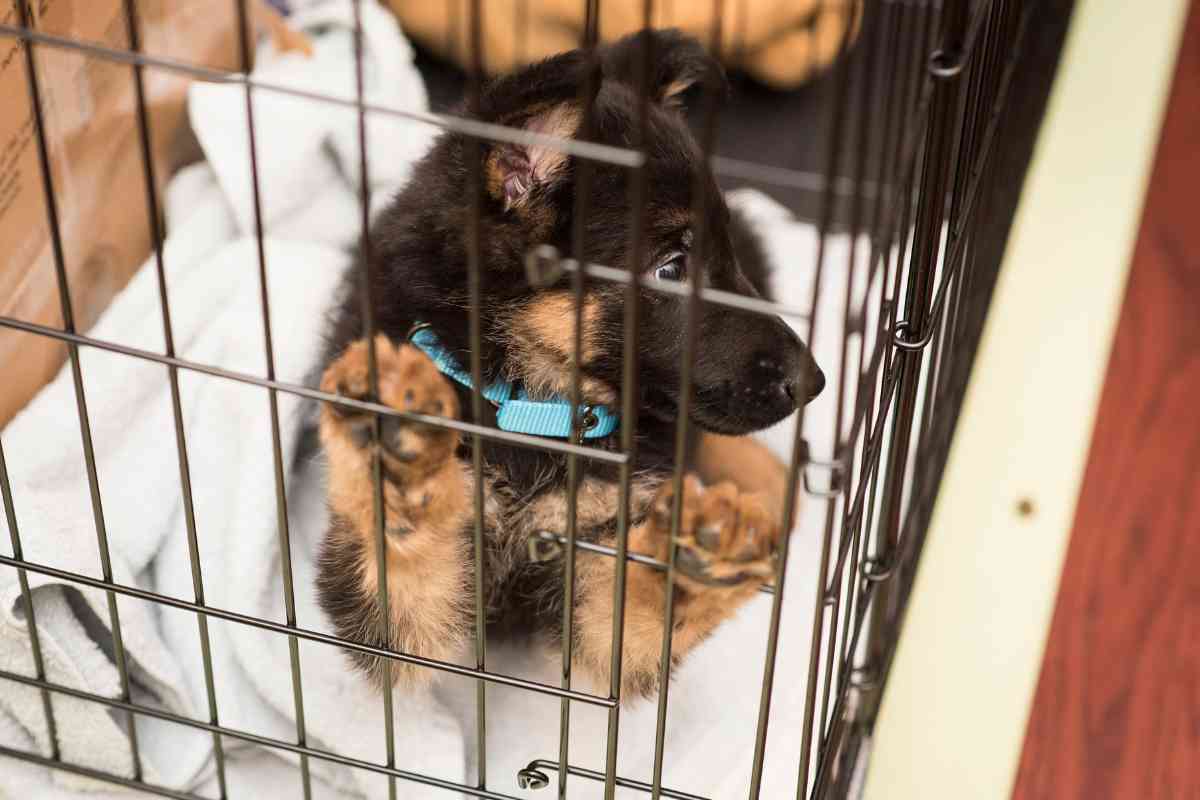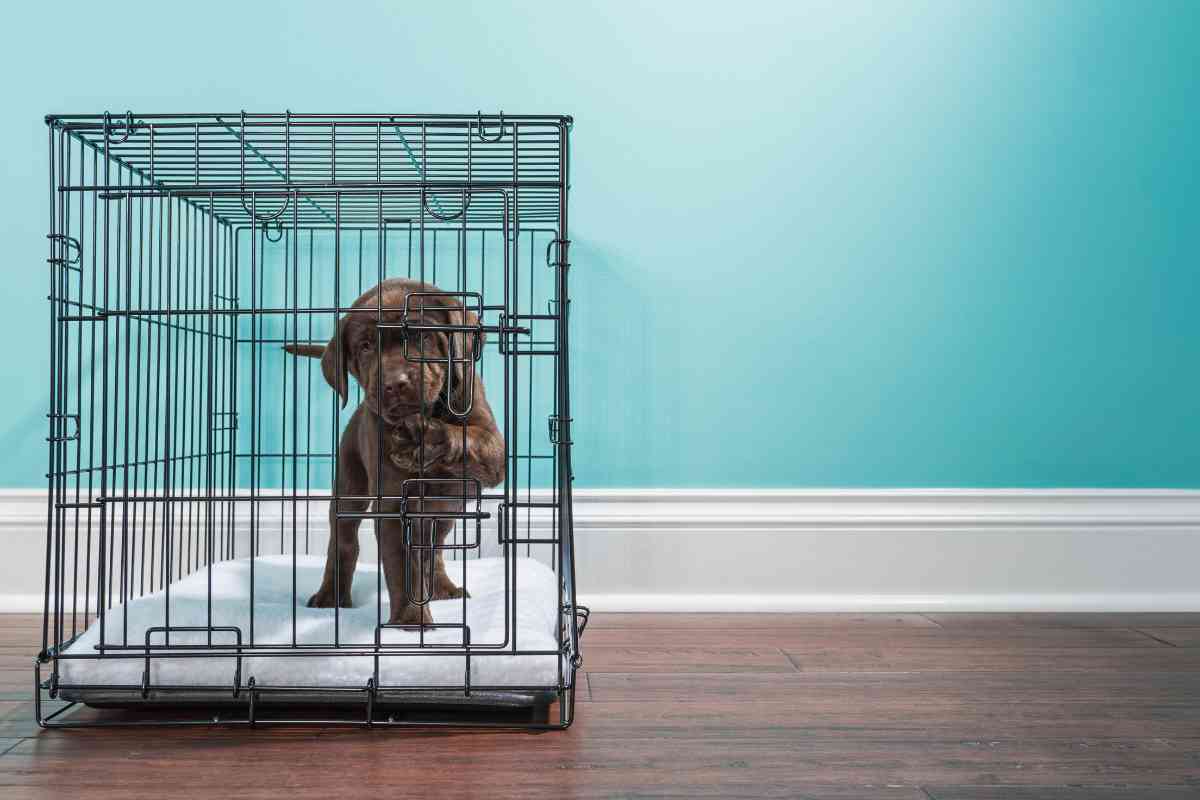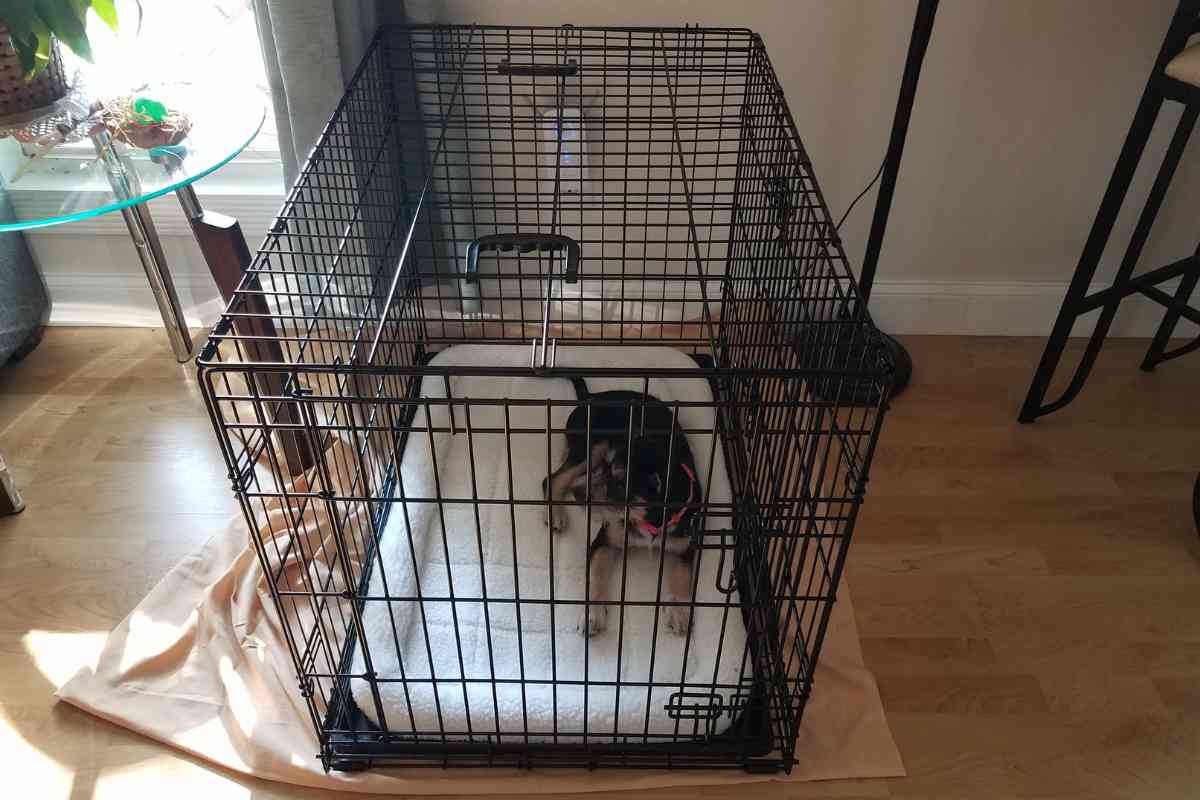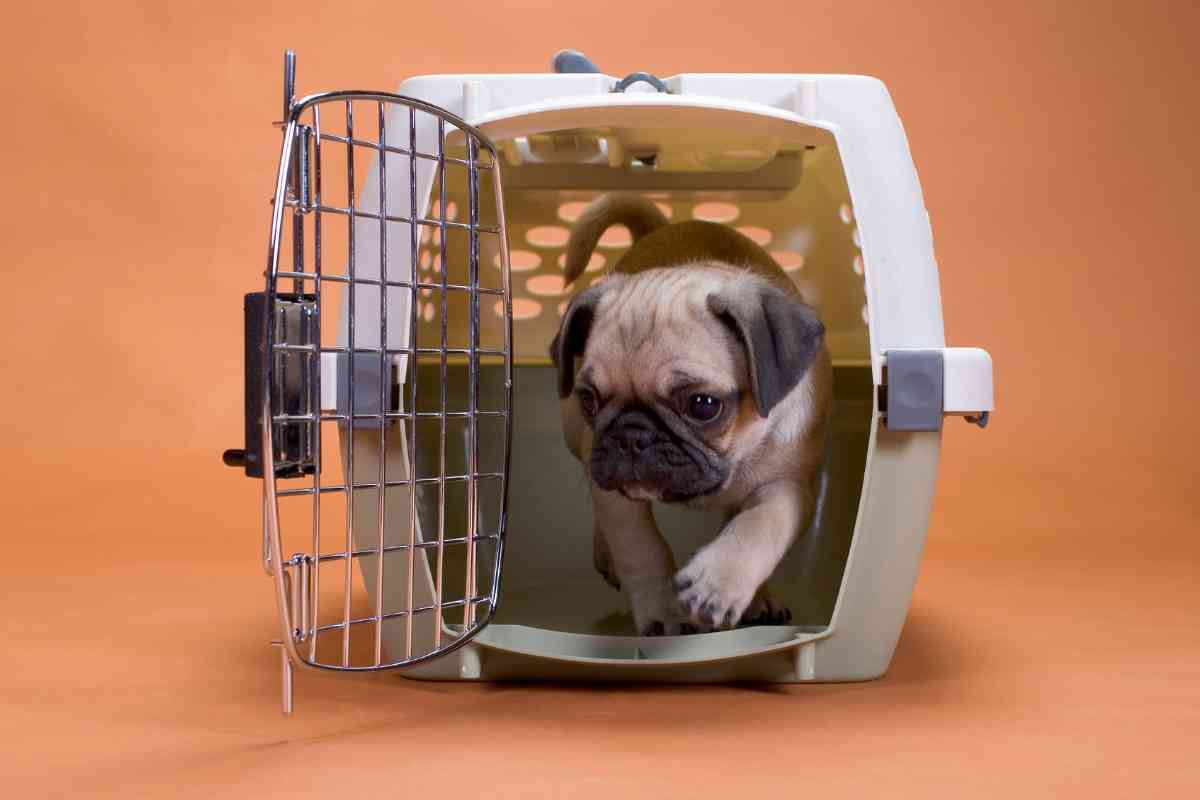How Much Room Should A Puppy Have In The Crate?
Puppies need a crate when you are not in a position to supervise them, and crate training is a very important step in a puppy’s life. So, how much room should a puppy have in a crate?

How much room should a puppy have in their crate?
The ideal way to know how much room your puppy requires is to measure its height and length while standing and then add an extra 4 inches to the puppy’s measurements. For instance, a puppy that is 10 to 15 inches can fit and move in a medium-sized crate if 4 to 5 inches are added to the crate.
Puppies will often require a portable place where they can play freely and lie to rest whenever they get tired.
Typically, most individuals confuse a kennel and a crate because they are used interchangeably. Kennels are a larger containment suitable for big dogs, while crates are suitable for puppies and other small dog breeds such as the Chihuahua.
I have been a victim of buying the wrong puppy cage for a while because I thought all puppy crates were identical.
But after some time, I realized that my pitbull puppies were not as playful as they should be at their age, and it became a concern. After monitoring them, I noticed they needed more than the cage space to roam and play freely without getting constrained or bending.
Additionally, the cage’s height needed to be more efficient because every time the puppies played, the upper part of their heads kept hitting the cage’s upper side.
Due to this, I had to research a better cage for them, and after measuring their sizes appropriately, I bought a new cage that was spacious and suitable for them.

Picking The Right Crate Size For Your Puppy
The quantity of room a puppy should have in its crate typically varies depending on the size and the breed of your puppy. For instance, an extra small crate will only fit a Great Dane Puppy older than eight weeks old or a typical Labrador retriever puppy because such puppies tend to be larger than other puppy breeds.
Therefore, the “rule of thumb” is to assist you in selecting the ideal puppy crate for your pet.
Size Guide of the Crate Room Ideal for Puppies

Typically, the sizes of the crates range from small to XX-large, but the ideal crates for the puppies will range from small to large crate sizes.
With this in mind, the following is a size guide of the puppy crates and some examples of puppy breeds that can live in them:
- Extra small puppy crates: this crate is suitable for puppies that weigh 5 pounds or less and are between 8 to 10 inches in length. The cage size is suitable for small puppy breeds such as Maltese, Papillion, Pomeranian, Shih Tzu, and Chihuahua.
- Small puppy crate: this crate is perfect for puppies between 5 to 15 pounds and between 10 to 15 inches in length. The cage size is suitable for puppy breeds such as the Bichon Frise, Cavalier King Charles Spaniel, pug medium Dachshund, Russell Terrier, Miniature Poodle, and Mini Schnauzers, among other breeds.
- Medium-sized puppy cage: This crate is suitable for puppies between 15 to 20 inches long and weighing between 20 and 25 pounds. Examples of puppy breeds that can comfortably fit in this crate are the Tibetan terrier, the beagle, the French bulldog, and the Welsh corgi, among others.Large-sized puppy cage: this is best for breeds that measure approximately 20 to 30 inches long and weigh between 25 and 40 pounds. It is suitable for puppy breeds such as the mastiff, American Pitbull, and goldendoodle.
How to Determine the Ideal Room your Puppy Needs in a Crate
As we had stated earlier, the puppy’s size, in terms of its length and height, is the most crucial factor to consider before buying a cage.
With that in mind, the following are the ideal ways to take the puppy’s measurements to guide you on how to buy an ideal cage:
Measuring the Puppy’s Length
Use a tape measure to measure your puppy from the tip of its snout to the base of its tail to determine the proper crate length. If the puppy is restless and very playful, seek help from your friend or family member to make accurate measurements.
After measuring the puppy’s length accurately, add about 4 extra inches to the measurement to give the puppy more freedom to move around and provide maximum comfort.
Measuring the puppy’s weight
The puppy’s weight also plays a crucial role in determining the room or space you need in the crate.
For instance, big pets such as the pitbull and mastiff puppies have got weight that will require a large crate to move freely and comfortably. Therefore, the more the weight, the more space a puppy will require.
Measuring the Puppy’s Height

Measuring the puppy’s height is crucial because it will help the puppy sit and stand comfortably without hitting the cage wall’s upper part.
To accurately determine the puppy’s height, measure it starting from its head or ear tip to the floor, then remember to add at least 4 inches of the measurement to make for extra space.
Choosing the Type of Puppy’s Crate
Although size is the most crucial factor in determining the accurate space a puppy requires in a cage, choosing the correct cage type is also important. Therefore, to make it easier for you to choose, the following are some types of ideal puppy crates to choose from while buying:
Metal or Wire Puppy Crate
Metal or wire puppy crates are the most commonly used because of their affordable price and significant room. They typically feature a single front door, although some variants include a roof and side doors for better access.
If your puppies enjoy their surroundings and are not adapted to staying in the house, this is the type of crate to buy. Additionally, the crate provides excellent ventilation and is a fantastic option if you reside in a hot region.
About portability, they are occasionally heavy, especially if you buy larger ones. If you love to travel with your puppy, purchase a lighter one.
Since you can easily alter the space by installing a divider, they are the greatest choice if the puppies are still nursing and cannot be separated from their mother.
Plastic Puppy Crates
Plastic puppy crates usually come to mind when you think about portable crates. If you frequently travel with your puppy, these crates are a wonderful option because they are lightweight and portable.
Regarding space availability, plastic puppy crates are more spacious than wire crates and are the best for flight travel because they are usually approved by the airlines.
Even though many plastic crate models are advertised as “transport” crates or “pet carriers,” you can also use them permanently at home.
They are better for puppies who are easily frightened when they can see their environments and enjoy a den-like environment because they have lower visibility than wire crates. It is also efficient in cold regions because they are lesser holes than in wire crates.
Stylish Wooden Puppy Crates
If you don’t like having a metal or plastic crate in your home, some extremely beautiful crates are constructed from finished wood or rattan on the market, so you don’t have to sacrifice. Wooden crates come in various designs that you can choose from, and sufficient space where your puppy can roam and play around.
However, these wooden crates are unsuitable for aggressive puppies because the wood will get damaged by their teeth and claws.
Even though some crates have a plastic tray that you can easily remove for cleaning, I still don’t suggest using them for puppies.
It is because any accidents would create stains on the wooden crate and unpleasant odors that could be difficult to get rid of. Additionally, when it comes to the cost of wooden crates, they are expensive, and I recommend buying them when the puppy has fully grown because it is efficient in well-trained dogs.
Soft-sided Puppy Crates
These can be a decent option for individuals who find plastic or wire crates unattractive because they don’t look cage-like.
They are a highly useful, portable solution for people who prefer to move or travel with their puppies, in addition to being used at home. They can also offer her a very pleasant shelter, whether at a beach excursion, picnic or in the garden.
They are incredibly portable and flatten out when not in use, making them easy to carry. These variants are available for big puppies because the smaller ones tend to become unstable, especially when you are traveling with them.
The greatest advantage of using soft-sided crates is that you can toss them in the washing machine without getting your hands dirty because they are usually machine-washable.
However, it’s advisable to utilize this container for periodic travels rather than making it a puppy’s permanent residence because the soft texture prevents it from becoming the sturdiest crate. Therefore, it is not a good option for puppies that can easily escape or are destructive.
Choosing the Size of the Puppy’s Crate
After determining the ideal type of crate to buy for your puppy, you can choose the ideal size based on the puppy’s length and height measurement.
Additionally, to offer your puppy more room, you can move up a size, but if you do so excessively, smaller puppy breeds may be able to squeeze through the openings. Therefore, ensure that the height and length of the crate are sizable enough to make the puppy comfortable and efficient to prevent the puppies from getting out of the house.
Key Takeaways
- You should estimate the size of the cage by measuring the puppy’s length, weight, and height
- Different types of crates offer distinct spaces for your puppy.
- It is advisable to buy an affordable crate because puppies are less active than big dogs.
- It is ideal for adding about 4 inches of your puppy’s measurement to create extra space for movement.